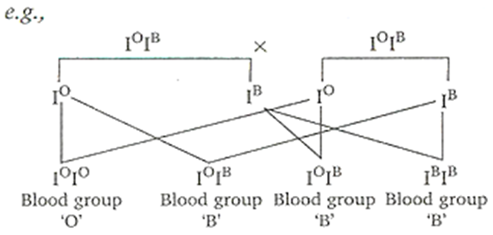 Multiple Choice Questions
Multiple Choice QuestionsWhich type of white blood cells are concerned with the release of histamine and the natural anticoagulant heparin?
Neutrophils
Basophils
Eosinophils
Monocytes
Which one of the following in birds, indicates, their reptilian ancestry?
Scales on their hindlimbs
Four-chambered heart
Two special chambers crop and gizzard in their digestive tract
Eggs with a calcareous shell
Select incorrect pair
Porifera – Choanocytes
Coelenterata – Nematocysts
Annelida – Segmentation
Monera – Eukaryote
Bilateral symmetry, metameric segmentation, coelom and open circulatory system are the features of
Annelida
Arthropoda
Mollusca
Echinodermata
Gigantism and acromegaly are due to
Hypothyroidism
Hyperthyroidism
Hypopituitarism
Hyperpituitarism
If a child is of O blood group and his father is of B blood group, the genotype of father is
IO IO
IA IB
IO IB
IO IA
C.
IO IB
The genotype of a person with blood group 'B' may be IBIB or IO1B, person with genotype IBIB cannot produce offsprings with blood group 'O' in any case but if the person's genotype is IO1B, then its offsprings may have blood group O.

Correctly matched set of phylum, class and example is
Protozoa-Mastigophora-Entamoeba
Mollusca=-Bivalvia-c-Pmcrcdc
Arthropoda-Diplopoda-Scolopendra
Chordata-Cyclostomata-Phrynosoma
